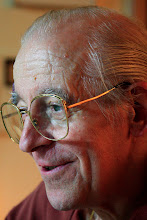
The first self-propelled vehicle that could carry a person was invented by French military engineer Nicolas-Joseph Cugnot (1725-1804). In 1770, he built a three-wheeled steam-powered vehicle, known as Fardier à Vapeur (Steam Dray) and drove it for one hour on the outskirts of Paris. It crashed into the Arsenal wall, and the event is considered the first car accident.

The Fardier à Vapeur (Steam Dray) of Cugnot
Back then, people going home for the holidays had to compete for train tickets. The JoongAng Ilbo’s Sep. 26, 1969 issue featured an article titled Pushed, Pressed and Beaten, which said that 110 000 people went to Seoul Station (서울驛, 서울역, Seoul Yok) to catch trains home for the Chusok (秋夕, 추석) holiday, and the police wielded bamboo sticks to keep them in order. By the late 1980s, auto transportation had become common and people who could not get train tickets would drive home on the holidays. Last year was no different, and it took more than nine hours to ride the 314 kilometres from Seoul to Pusan (釜山, 부산) during Chusok holidays.

Seoul–Pusan expressway during Chusok holidays
No one wants to sit in a car for hours, and a new invention may remedy that problem. Two years ago, the American computer scientist Larry Page (1973- ), the founder of Google, was looking down at Highway 101 in Silicon Valley from his private airplane, and it occurred to him that technology could help save humans a tremendous amount of time and space on the road. Since then, Google has been developing driverless cars. The company believes that the automated vehicles will reduce the distance between cars on the road and reduce traffic accidents. According to experts, twice as many driverless cars could be on the road as cars driven by people. If the initiative gains traction, you may soon be able to inform your car of your destination and let it take you there automatically.
As English poet and painter William Blake (1757-1827) once said: “What is now proved was once only imagined.” Let’s hope that what was once imagined by the Google founder comes to fruition soon so that future journeys for the holidays will be a little more comfortable.
Giorgio Olivotto
Photo by Giorgio Olivotto
Seoul, Korea
February 19, 2012

Nessun commento:
Posta un commento